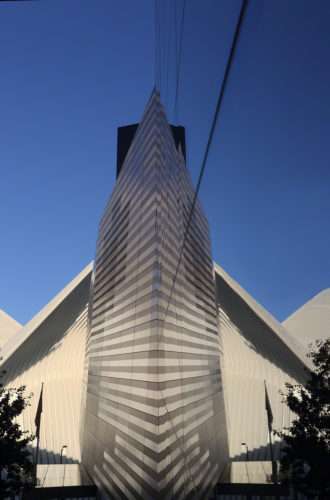 Here’s a very interesting concept I want to share with all of you. Something to think about when you’re shooting:
Here’s a very interesting concept I want to share with all of you. Something to think about when you’re shooting:
There’s two men swimming in the ocean, and while doing so one of the men sees a gray spot against a calm blue horizon. That man decides to swim to shore, the other man doesn’t and is eaten by a huge shark. By reacting to something different, the man that swam to shore survived. He saw something different!!!
Creativity is the gray spot. It was that which was the most different. As photographers we want the viewer to react (and will always react) to that, which is the most different.
Imagination keeps us young. It’s the gas and oil that keeps our mind running smoothly. Hopefully, the kinds of people that will look at our work do have some semblance of being creative…or they wouldn’t be bothered…so who cares about them??? That goes for ourselves as well. Let everyone else be predictable in his or her approach to shooting pictures. Remember that good photographers follow the more traditional ways and adhere to all the rules. The great photographers “follow the beat of a different drummer”, and break the rules.
Most people put a high value on creativity, but since it’s an intangible commodity it’s also misunderstood. It takes a somewhat flexible mind to even get close to realizing its importance in our society. I’ve had students in my workshops tell me that in order to be really creative you have to be original, and they also say that there aren’t any photos left that haven’t already been taken. While it’s true that there aren’t very many if any original ideas left, the creative part comes in when you take those existing ideas and show them in a new way. Marcel Proust, a French novelist said, “The voyage of discovery is not in seeking new landscapes, but having new eyes”.
One way to see new landscapes is to what I call “Seeing past first impressions”. The great photographs that you aspire to take will come with seeing new ways to look at old ideas. Go out and be prepared for the unexpected. Eddie Adams, a Pulitzer Prize winning photographer once said, “When you get lucky be ready”.
In my opinion, one of the best inventions to ever come around, hell bent on stifling creativity is the Histogram, and those pesky blinking areas in the back of your camera that tells you that in a certain part of your frame the highlights were clipped (see my post on this subject). DANGER-COMBUSTIBLE-DO NOT MIX THESE WITH CREATIVITY-HARMFUL IF SWALLOWED!!! Truth be told, they actually slow the process down and no doubt were put there because that’s our world now. If you free yourself of those things your photos will have a much better chance of moving “up a notch”.
To my way of thinking it’s going to do more harm than good, and wind up complicating those creative juices. Learn to feel/see/ find the light, then be creative with it. It’s so important to be able to sense when it’s changing all around you and make immediate corrections without looking at your Histogram because make no mistake, light is so fleeting that just a few seconds can make the difference in going home empty handed or excited because you just took the best photo of your photographic life.
Spark those creative juices. Shoot photos without looking through the viewfinder. Stand on top of something, lay on your stomach, shoot with the lens you like the least, etc. I tell people to take art classes as a way to expand your current thought process; as a way to get new ‘creative juices into your veins. This is what I always tell my online students I teach with the BPSOP, and my “Stretching Your Frame of Mind” workshop I conduct around the planet when they ask what else they can do to take stronger photos.
If you really want to enjoy the power of creativity in it’s purest form, KNOW YOUR CAMERA, UNDERSTAND WHAT GOOD COMPOSITION IS, MASTER THE ELEMENTS OF VISUAL DESIGN, HOW EXPOSURE WORKS, and FOLLOW THE LIGHT. In my opinion you could forget everything else. I did and my photos still come out pretty good.
Be creative, stay thirsty, and survive my fellow photographers.
-BPSOP Instructor: Joe Baraban
Joe Teaches:










